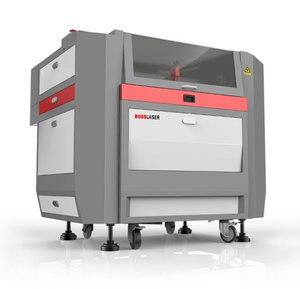Difference between revisions of "Laser"
JStallings (talk | contribs) (Created page with "==Our Laser== thumb|right TSAS has a 100w [https://www.bosslaser.com/boss-ls-1630.html Boss LS-1630 laser] with a cutting capacity of 400 x 750mm or 15...") |
JStallings (talk | contribs) |
||
| (9 intermediate revisions by the same user not shown) | |||
| Line 1: | Line 1: | ||
==Our Laser== | ==Our Laser== | ||
[[File:BossLS1630.png|thumb|right]] | [[File:BossLS1630.png|thumb|right]] | ||
TSAS has a 100w [https://www.bosslaser.com/boss-ls-1630.html Boss LS-1630 laser] with a cutting capacity of 400 x 750mm or 15.75" x 29.50". In general, if your material is 1/4" (6.35mm) or thinner, the information below applies. The machine is capable of cutting up to 3/5", but see Stallings before planning a project with very thick material. | TSAS has a 100w [https://www.bosslaser.com/boss-ls-1630.html Boss LS-1630 laser] with a cutting capacity of '''400 x 750mm or 15.75" x 29.50"''', with pass-through windows. This means that if your project is larger in one dimension (like a 25" wide surfboard), it will fit inside the machine—we'll just need to cut/engrave in multiple sections. | ||
==Materials== | |||
In general, if your material is 1/4" (6.35mm) or thinner, the information below applies. The machine is capable of cutting up to 3/5", but see Stallings before planning a project with very thick material. | |||
===Things it can cut=== | ===Things it can cut=== | ||
See [http://atxhackerspace.org/wiki/Laser_Cutter_Materials ATX Hackerspace list] for a more complete list | See [http://atxhackerspace.org/wiki/Laser_Cutter_Materials ATX Hackerspace list] for a more complete list | ||
* Wood: plywood, hardwood, MDF, cardboard, paper, cork | * Wood: plywood, hardwood, MDF, cardboard, paper, cork | ||
* (Some) plastics: acrylic, | * (Some) plastics: acrylic, delrin, mylar | ||
* Metal (engrave only) | * Metal (engrave only) | ||
* Leather | * Leather, cloth | ||
* Magnet sheet | * Magnet sheet | ||
| Line 27: | Line 30: | ||
* ABS (melts) | * ABS (melts) | ||
== | ===Material Resources=== | ||
* [https://www.tulsaplastics.com/ Tulsa Plastics] (local) | |||
* [http://www.regalplastic.com/ Regal Plastic] (local) | |||
* [https://www.jpplus.com/ Johnson Plastics Plus] (online) | |||
* [https://ocoochhardwoods.com/scroll-saw-lumber/ Ocooch Hardwoods] (online) | |||
* [https://www.engraving-supplies.com/ Trotec Engraving Supplies] (online) | |||
==Creating a Project== | |||
{{note|Your project must be in one of the following vector file formats if you wish to cut through the material: .ai, .pdf, .dxf, .hpgl, .plt, .rd, .svg, or .tga. Check the [[Vector or Raster?|vector page]] for more info if you aren't sure what that means. If you only wish to engrave, the machine will accept .bmp, .jpg, .jpeg, .png, .gif, .tif, or .tiff.|reminder}} | |||
If you are on a desktop computer, your best choices for creating a vector design are [https://inkscape.org/ Inkscape] (free, open source) or [https://www.autodesk.com/products/fusion-360/overview#banner Fusion 360] (free for our use). Stallings would love to walk you through either one. | |||
If you are on a Chromebook, [[SketchUp for the Laser|SketchUp]] has an excellent Chrome app, or [https://vectr.com Vectr], a free website that works well for tracing images. | |||
Once you have your image, see Stallings to begin the cutting/engraving process. | |||
==Project Ideas/Downloads== | |||
* [https://www.instructables.com/id/Laser-Cutting-Projects/ Instructables] | |||
* [https://obrary.com/ Obrary] | |||
* [https://www.instagram.com/explore/tags/lasercutting/ Instagram] | |||
* [https://www.thingiverse.com/tag:lasercut Thingiverse] | |||
* [https://www.youmagine.com/designs/tags/lasercut YouMagine] | |||
* {sigh} [https://www.etsy.com/market/laser_cut Etsy] | |||
[[Category:Maker Space]] | |||
[[Category:Laser]] | |||
Latest revision as of 07:01, 14 October 2019
Our Laser
TSAS has a 100w Boss LS-1630 laser with a cutting capacity of 400 x 750mm or 15.75" x 29.50", with pass-through windows. This means that if your project is larger in one dimension (like a 25" wide surfboard), it will fit inside the machine—we'll just need to cut/engrave in multiple sections.
Materials
In general, if your material is 1/4" (6.35mm) or thinner, the information below applies. The machine is capable of cutting up to 3/5", but see Stallings before planning a project with very thick material.
Things it can cut
See ATX Hackerspace list for a more complete list
- Wood: plywood, hardwood, MDF, cardboard, paper, cork
- (Some) plastics: acrylic, delrin, mylar
- Metal (engrave only)
- Leather, cloth
- Magnet sheet
Things it can engrave
- All from the cut list—if it can be cut, it can be engraved.
- Metal
- Glass
- Rock
- Tile
- Anodized aluminum
Things it can NOT cut or engrave
See ATX Hackerspace list for a more complete list]
- Lexan (fire)
- PVC (puts off chlorine gas)
- Epoxy (fire)
- Polystyrene or polypropylene foam (fire)
- ABS (melts)
Material Resources
- Tulsa Plastics (local)
- Regal Plastic (local)
- Johnson Plastics Plus (online)
- Ocooch Hardwoods (online)
- Trotec Engraving Supplies (online)
Creating a Project
If you are on a desktop computer, your best choices for creating a vector design are Inkscape (free, open source) or Fusion 360 (free for our use). Stallings would love to walk you through either one.
If you are on a Chromebook, SketchUp has an excellent Chrome app, or Vectr, a free website that works well for tracing images.
Once you have your image, see Stallings to begin the cutting/engraving process.
